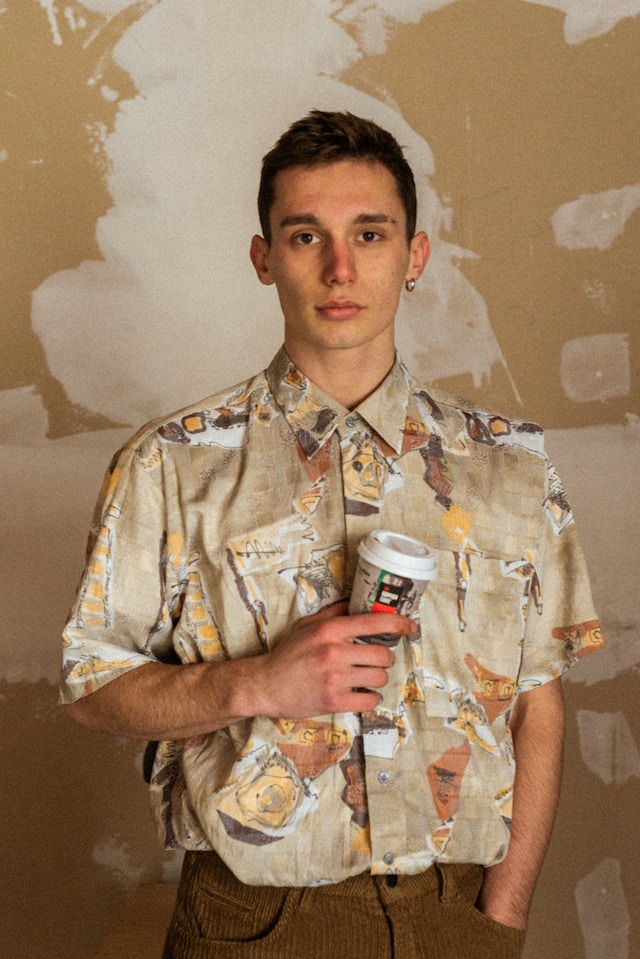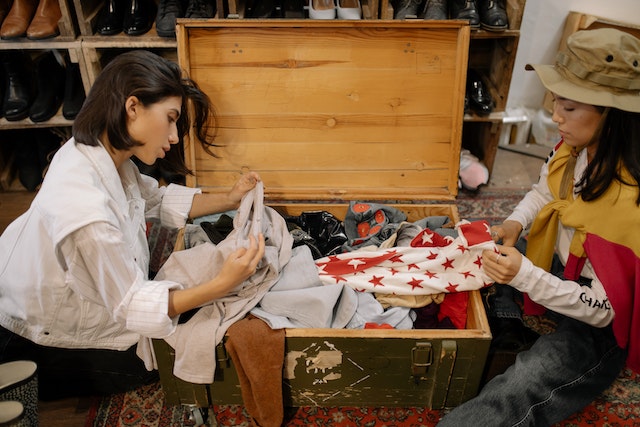
Vintage clothing has been gaining popularity over the years as more and more people opt for a unique and sustainable fashion style. Vintage clothing refers to clothing that was made in a previous era or decade, usually between the 1920s and 1990s.
Wearing vintage clothes is an excellent way to express yourself and show off your unique fashion sense. Every piece of vintage apparel tells a story, with each era having its own unique style and fashion trend. From the flapper dresses of the 1920s to the bell-bottom jeans of the 1970s, vintage clothes is all about capturing a moment in time.
Types of Vintage Clothing
When it comes to vintage apparel, there are a few different categories to keep in mind. Each type of vintage clothing has its own unique qualities, making them a great way to add a touch of the past to your wardrobe.
Retro clothing
One of the most popular types of vintage apparel is retro clothing. Retro clothing refers to modern reproductions of fashion trends from previous eras. These pieces often take inspiration from the 1950s, 60s, and 70s and are made to look like they are from those decades.
True vintage clothing
True vintage apparel is authentic clothing from the past. Vintage clothes enthusiasts love true vintage clothes because it has a history and a story behind it. When shopping for true vintage apparel, it’s important to pay attention to the quality and condition of the garment. These pieces can be found at thrift stores, flea markets, and vintage apparel shops.

Vintage-inspired clothing
Vintage-inspired clothing is a modern take on vintage styles. These pieces often have a vintage aesthetic or design but are made with modern fabrics and construction techniques. They are a great way to add a vintage touch to your wardrobe while still wearing something comfortable and functional.
Benefits of Wearing Vintage Clothing
Wearing vintage clothes has numerous benefits that make it a great fashion choice. Whether you’re looking to stand out in a crowd or looking for a sustainable fashion option, vintage apparel has got you covered.
One of the main benefits of buying vintage pieces is the unique fashion choices it offers. Vintage pieces are one-of-a-kind and are not mass-produced like modern clothing. Every piece of vintage apparel has a story behind it, making it a unique fashion statement that expresses your personal style.
Another advantage of vintage pieces is that it is a sustainable and eco-friendly fashion option. Fast fashion has become a significant issue in the fashion industry, as it is responsible for a large amount of waste and pollution. Wearing vintage apparel helps to reduce the demand for new clothing production, making it a more sustainable choice.
Embracing nostalgia is another benefit of wearing vintage apparel. Clothing from previous decades can evoke a sense of nostalgia and bring back fond memories. Vintage pieces enthusiasts often enjoy collecting clothing from different eras and incorporating them into their wardrobe for a nostalgic touch.
Lastly, vintage apparel is known for its quality craftsmanship and durability. Clothing from the past was often made with better materials and construction techniques, which is why many vintage pieces are still in excellent condition today. Investing in vintage clothing is a smart choice, as it can last for many years to come.
Buying and Caring for Vintage Clothing
If you’re new to the world of vintage apparel, here are some tips to help you get started:
1. Researching and identifying vintage clothing eras and styles: Before buying vintage clothes, it’s important to research different eras and styles to identify what you like and what fits your personal style. This will also help you to avoid buying clothing that is not truly from the era you are looking for.

2. Finding reputable vintage stores and online marketplaces: When buying vintage clothes, it’s essential to find reputable vintage stores and online marketplaces that specialize in vintage apparel. This will help ensure that you are buying authentic vintage pieces and not reproductions.
3. Understanding sizing and alterations for vintage garments: Sizing of vintage apparel can be vastly different from modern sizing. It’s important to take accurate measurements and compare them with vintage sizing charts to ensure a proper fit. Alterations may also be necessary to make the garment fit correctly.
4. Proper cleaning and preservation of vintage apparel: Proper care and preservation are essential to maintaining the quality and lifespan of vintage pieces. It’s important to follow the care instructions carefully, and to store vintage apparel in a cool, dry place with proper ventilation.
Collecting and Investing in Vintage Clothing
For vintage apparel enthusiasts, collecting and investing in vintage clothes is a way of life. Building a vintage apparel collection can be an exciting and rewarding experience for those who appreciate the history and craftsmanship of clothing from past decades. One of the main benefits of collecting vintage clothes is the ability to own unique and timeless pieces that are not readily available in modern fashion.

When it comes to investing in vintage clothes, there are several factors to consider to ensure that you are making a smart investment. One of the most important things to consider is the condition of the garment.
Vintage pieces that are in excellent condition with minimal wear and tear are considered more valuable than pieces that show signs of damage or deterioration. It’s also important to consider the rarity and desirability of the piece. Vintage pieces that are highly sought after or were worn by famous celebrities or icons can fetch a higher price in the market.
A unique and stylish fashion choice
In conclusion, vintage clothing is not only a unique and stylish fashion choice, but it also promotes sustainability and diversity in the fashion industry. So why not add a touch of the past to your wardrobe and embrace vintage clothing?
